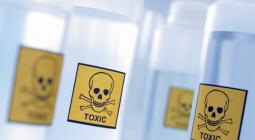New research finds alarming levels of toxic chemicals in children’s mattresses
A study shows that toxic flame retardants used in mattresses can seep into air and be absorbed by children
Alarming levels of highly toxic phthalates, flame retardants and UV filters in the air in small children’s bedrooms likely stems from kids’ mattresses off-gassing the chemicals, new research suggests.
The peer-reviewed study measured air in the rooms of children under four years old, and the highest volumes were detected around the kids’ beds. An accompanying study checked for the same chemicals in 16 common kids mattress brands, and found them at concerning levels in each.
The chemicals are semi-volatile, meaning they can lift off objects and seep into the air over time, and a simulation then found the warmth and weight of a sleeping child could increase the off-gassing.
The chemicals can then be inhaled, absorbed by the skin, or attach to dust and be ingested.
Researchers were “very surprised” by the chemical levels, said Miriam Diamond, a study co-author and environmental chemist at the University of Toronto. One mattress’s weight was 3% flame retardant.
“We were really shocked to find what was in the mattresses,” Diamond said. “The kids are getting quite a dose of this stuff.” The study was done in partnership with the Green Science Policy Institute in California.
Phthalates and flame retardants are classes of chemicals with compounds linked to serious health issues like cancer, reproductive harm, genital malformation, neurological damage, hormonal disruption and early puberty. Exposure to some types of flame retardants is strongly linked to lower IQs in children.
Phthalates are typically used as plasticizers that help materials bend, and are added to plastic mattress covers, but they were also detected in non-plastic covers, which surprised the authors, Diamond said.
Some types of phthalates are restricted for use in children’s products in the US because of their high toxicity, and the levels in four mattresses exceeded those. No limits exist for other concerning phthalate compounds.
UV filters are added to textiles to prevent dyes from deteriorating, and research has increasingly raised concerns about potential health effects.
Mattresses need to meet flammability standards to prevent fires from spreading, so most companies use flame retardants. However, public health advocates and even some firefighting organizations say flame retardants are largely ineffective and do more harm than good because of their toxicity both to people exposed to them in products, and firefighters who encounter them in smoke.
No federal limits for flame retardant levels in mattresses exist in the US or Canada, but several types of flame retardants that are outright banned in one of the countries, or restricted from use in kids’ products, were found in the mattresses. TCEP, for example, constituted 1% of the weight of one mattress.
Researchers didn’t name the mattress companies but said the products were among common brands sold in the US and Canada for under $150. The mattresses contained materials from unknown countries in addition to China, Turkey and Mexico, so the country of production is unlikely to make a difference, Diamond said.
For those seeking to take some steps to protect themselves, look for mattresses that don’t have flame retardants, or use an alternative, like wool – though those mattresses are typically more expensive. Mattresses made of natural materials such as cotton or latex are less likely to have phthalates, though it’s not a guarantee.
Setting mattresses outside to off-gas after purchase can help get rid of some chemicals, but not all, as phthalates and flame retardants could take years to seep away. Diamond said adding a protective barrier like a terry cloth towel that’s good at absorbing chemicals can be helpful.
But ultimately, “the onus is on the mattress manufacturers” to stop using toxic chemicals, Diamond said.
“The mattress manufacturers need to be more vigilant,” she added.
Cover photo: Concerning levels of toxic chemicals are found in common children’s mattress brands. Photograph: SanyaSM/Getty Images



